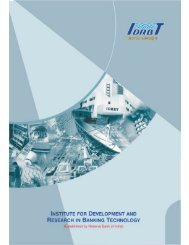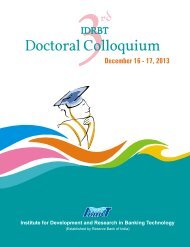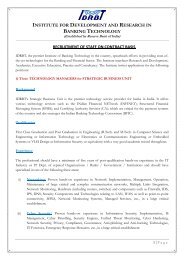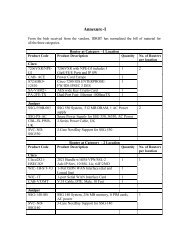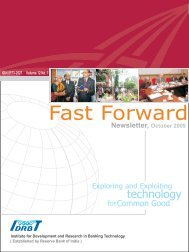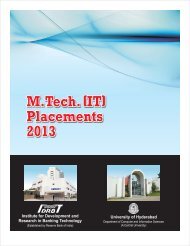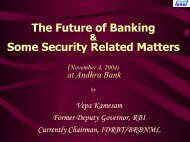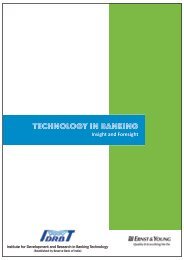FI Overview Document Version 1.1.pdf - IDRBT
FI Overview Document Version 1.1.pdf - IDRBT
FI Overview Document Version 1.1.pdf - IDRBT
You also want an ePaper? Increase the reach of your titles
YUMPU automatically turns print PDFs into web optimized ePapers that Google loves.
<strong>Overview</strong> <strong>Document</strong><br />
<strong>Version</strong> 1.1<br />
4<br />
1 Introduction<br />
According to the Committee on Financial Inclusion (Jan.2008) the<br />
recent developments in Banking Technology have transferred<br />
banking from traditional brick and mortar infrastructure like<br />
staffed infrastructure to as system supplemented by other channels<br />
like ATMs, Credit/Debit Cards, Internet Banking, Online Money<br />
transfers etc. However, the access to the technology at present is<br />
restricted only to a certain segment of the society.<br />
According to the Committee “Access to finance by the poor and<br />
vulnerable groups is a prerequisite for poverty reduction and<br />
social cohesion. This has to become an integral part of our efforts<br />
to promote inclusive growth. In fact, providing access to finance is<br />
a form of empowerment of the vulnerable groups. Financial<br />
inclusion denotes delivery of financial services at an affordable<br />
cost to the vast sections of the disadvantaged and low-income<br />
groups. The various financial services include credit, savings,<br />
insurance and payments and remittance facilities. The objective of<br />
financial inclusion is to extend the scope of activities of the<br />
organized financial system to include within its ambit people with<br />
low incomes. Through graduated credit, the attempt must be to lift<br />
the poor from one level to another so that they come out of poverty.<br />
NSSO data reveal that 45.9 million farmer households in the<br />
country (51.4%), out of a total of 89.3 million households do not<br />
access credit, either from institutional or non-institutional sources.<br />
Further, despite the vast network of bank branches, only 27% of<br />
total farm households are indebted to formal sources (of which<br />
one-third also borrow from informal sources). Farm households<br />
not accessing credit from formal sources as a proportion to total<br />
farm households is especially high at 95.91%, 81.26% and 77.59%<br />
in the North Eastern, Eastern and Central Regions respectively.<br />
Thus, apart from the fact that exclusion in general is large, it also<br />
varies widely across regions, social groups and asset holdings.<br />
IBA-<strong>IDRBT</strong> Technical Committee on Open Standards for Financial Inclusion<br />
September 09



